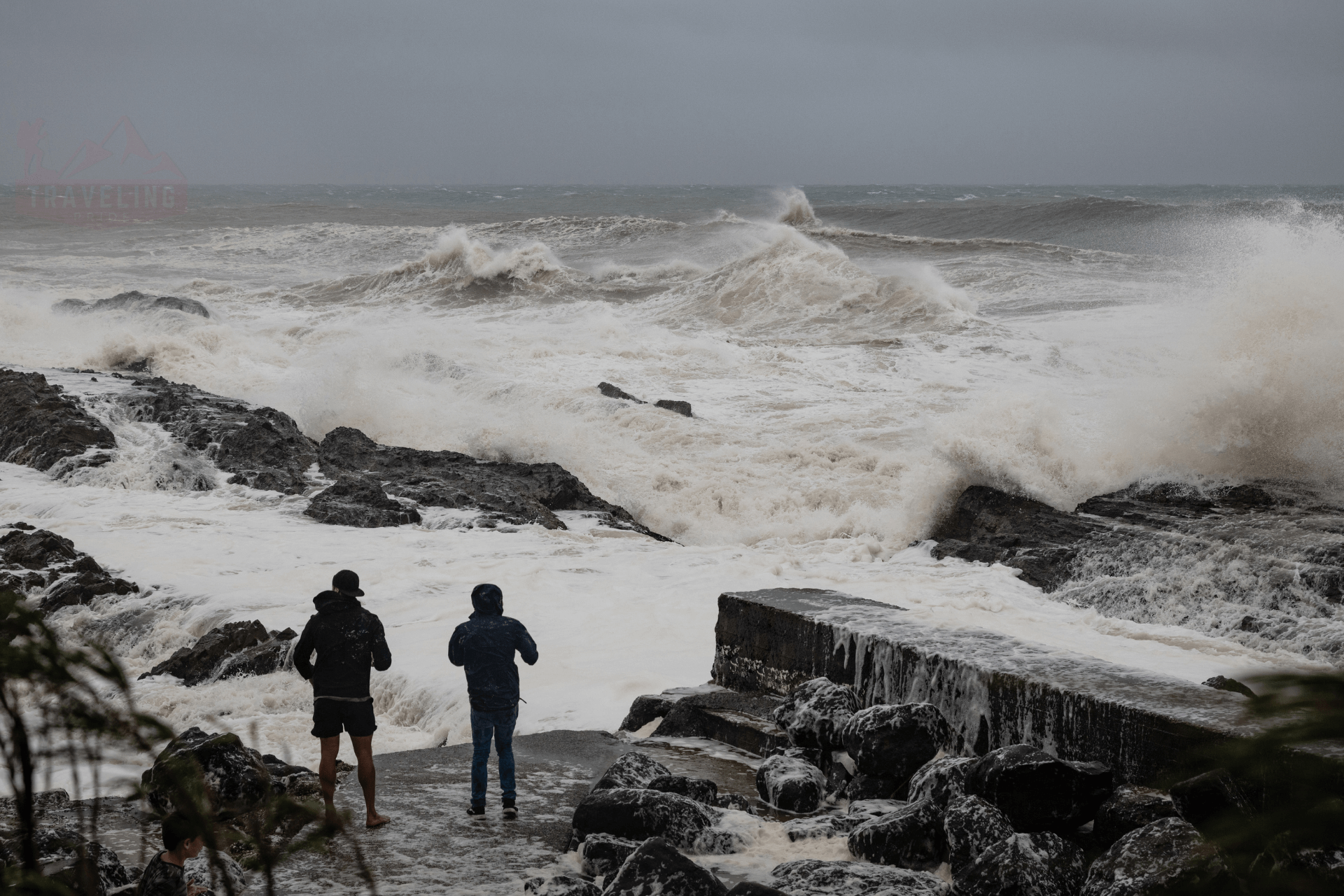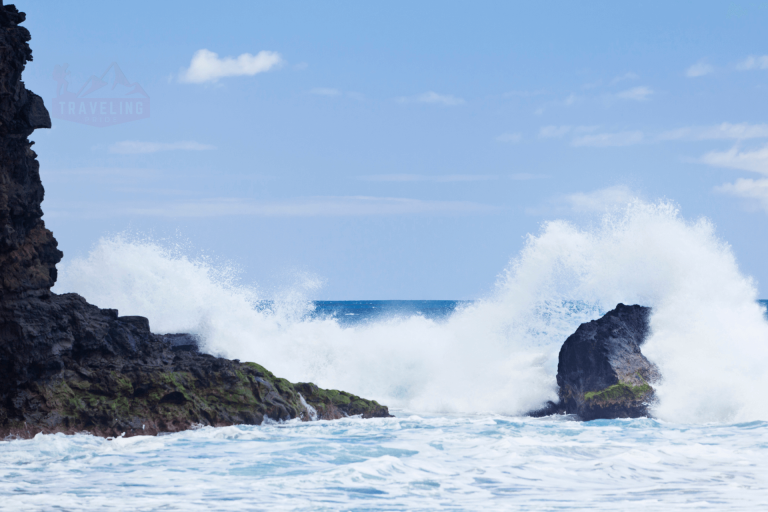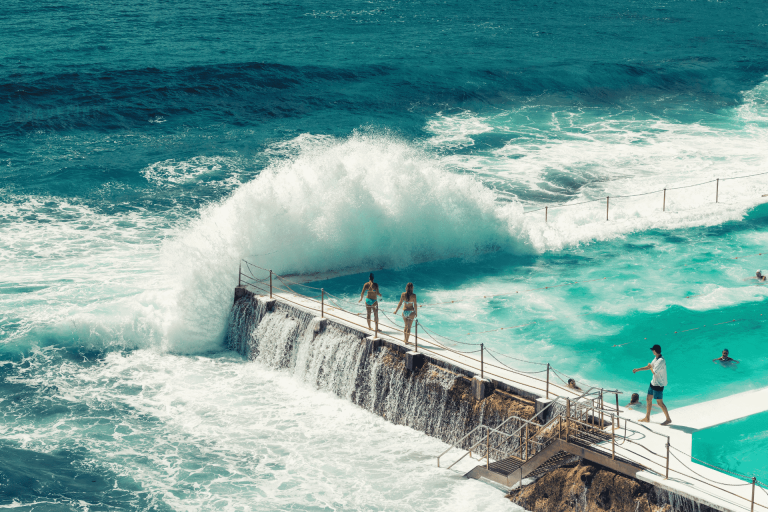21 Most Dangerous Beaches Around the World
With global warming rising and natural disasters becoming more frequent, it’s important to be aware of the potential dangers lurking in seemingly idyllic destinations. Beaches are often peaceful and relaxing, but some can also be hazardous. From strong currents and dangerous marine life to pollution and extreme weather conditions, here are 21 of the most dangerous beaches around the World.
What Makes a Beach Dangerous?
When we talk about dangerous beaches, several factors come into play. Weather conditions, wildlife, and geological features can transform a seemingly tranquil beach into a hazardous locale. Understanding these elements can help you make informed decisions while planning your next adventure.
Weather Conditions
Severe weather can make any beach dangerous. Strong currents, hurricanes, and typhoons can lead to unsafe swimming and life-threatening situations. Many of the World’s most hazardous beaches are in regions prone to extreme weather events.
Wildlife Hazards
Marine life can pose significant risks to beachgoers. Sharks, jellyfish, and other potentially dangerous creatures inhabit many coastal areas, and some beaches are also home to aggressive land animals that can threaten visitors.
Geological Factors
The geological makeup of a beach can contribute to its danger. Steep drop-offs, strong undertows, and hazardous reefs can make swimming difficult, and these natural features can catch even the most experienced swimmers off guard.
21 Most Dangerous Beaches in the World
- Hanakapiai Beach, Hawaii
Nestled within the breathtaking Na Pali Coast, Hanakapiai Beach is a mesmerizing destination known for its striking beauty and rugged landscape. The beach is surrounded by towering cliffs and lush greenery, creating a picturesque setting that attracts many visitors.
However, its allure comes with significant danger; strong rip currents have claimed numerous lives over the years, earning it a reputation as one of the deadliest beaches in Hawaii. The powerful waves and unpredictable waters discourage swimming here, even for experienced swimmers. Those who visit are advised to admire the beach from the shore, where they can take in the stunning views and capture unforgettable photos while staying safe.
2 – Praia de Boa Viagem, Brazil
Praia de Boa Viagem is renowned for its stunning beauty and shark-infested waters, which have gained a notorious reputation. Located in the vibrant city of Recife, this beach attracts both locals and tourists who flock to its golden sands and clear blue waters. However, it has also witnessed numerous shark attacks over the years, making it a hotspot for thrill-seekers and beachgoers alike.
While the beach is a favorite spot for sunbathers looking to relax and soak up the sun, swimming in these waters can be extremely risky due to the presence of sharks. Visitors are often advised to admire the picturesque landscape from the shore rather than venturing into the ocean, ensuring their safety while enjoying the breathtaking views and lively atmosphere.
- Gansbaai, South Africa
Known as the Great White Shark capital of the World, Gansbaai draws thrill-seekers from across the globe for its exhilarating cage diving experiences. This picturesque coastal town, nestled along the western edge of the Cape Peninsula, offers breathtaking views of the ocean and surrounding cliffs.
The waters off Gansbaai are teeming with these apex predators, making it one of the most dangerous places to swim. Not only do visitors have the unique opportunity to observe these magnificent creatures up close, but they also get a glimpse into sharks’ vital role in maintaining the marine ecosystem. While the thrill of diving with sharks is unmatched, it’s important to remember the inherent risks of entering their territory.
- Fraser Island, Australia
Fraser Island may appear to be a tropical paradise with its stunning beaches and lush rainforests, but it conceals some severe dangers. It’s notorious for its population of box jellyfish, whose stings can be lethal, especially during certain months.
Strong rip currents can catch even the most experienced swimmers off guard, and the island is also home to wild dingoes that have attacked unsuspecting visitors. Given these hazards, it’s crucial for anyone planning to visit Fraser Island to be well-informed and prepared for its risks.
- New Smyrna Beach, Florida
New Smyrna Beach is often referred to as the shark attack capital of the World, a title it has earned due to its high frequency of shark encounters. The warm waters of the Atlantic attract both surfers and a variety of shark species, leading to frequent interactions that can sometimes result in bites.
It is recommended that swimmers and surfers remain vigilant and adhere to safety guidelines when enjoying this popular beach destination. Caution is paramount when entering the water.
- Kilauea, Hawaii
Kilauea Beach is uniquely beautiful, located near one of the most active volcanoes in the World. While the black sand beaches are a mesmerizing sight, the area is at risk from lava flows and toxic gases that can suddenly change with volcanic activity.
Visitors must stay informed about local warnings and avoid venturing too close to the lava flows. Due to its geological volatility, this pristine beach spot can quickly turn dangerous.
- Reunion Island, Indian Ocean
Reunion Island offers breathtaking landscapes and stunning beaches, but it is not without its dangers. The island has experienced many shark attacks, leading the government to enforce strict swimming bans in several areas to protect beachgoers.
Despite its captivating scenery and opportunities for adventure, potential visitors should be aware of the risks involved in ocean activities and heed local advisories to ensure their safety.
- Skeleton Coast, Namibia
The Skeleton Coast is infamous for its treacherous waters, shipwrecks, and harsh weather conditions. Strong currents can easily sweep away even the most cautious swimmers, while dense fog often obscures sailors’ navigation, creating a perilous environment.
The coastline is littered with shipwreck remnants, serving as a stark reminder of the dangers posed by this rugged and beautiful stretch of land. Beachgoers are advised to exercise extreme caution and respect the natural forces in this unique locale.
- Copacabana, Brazil
Copacabana is renowned for its vibrant atmosphere, picturesque beach, and lively nightlife, yet it also harbors significant risks. The beach is known for strong rip currents that can be dangerous for swimmers, particularly during stormy weather.
Additionally, the area has high crime rates, with reports of theft and other criminal activities. Visitors should remain alert and take precautions in the water and streets to ensure a safe and enjoyable experience.
- Playa Zipolite, Mexico
Playa Zipolite affectionately nicknamed the “Beach of the Dead,” is a haven for free spirits and nudists seeking a laid-back atmosphere. However, the beach is infamous for its dangerous rip currents, which have tragically claimed many lives over the years.
While the allure of this beautiful spot is undeniable, swimming here can be highly risky, and beachgoers are strongly advised to be cautious and aware of their surroundings before venturing into the waves.
- Dumas Beach, India
Dumas Beach is steeped in mystery and surrounded by local legends. It is known for its picturesque yet eerie atmosphere. Its sands are said to conceal quicksand, making it a place that locals often avoid despite its visual appeal.
Dark folklore has added to its reputation, with tales of spirits and supernatural occurrences that make it a curious destination for thrill-seekers. Those visiting should tread carefully and respect this intriguing beach’s local customs and stories.
- Bikini Atoll, Marshall Islands
Bikini Atoll is infamous for its history of nuclear testing, which has rendered the area radioactive. While it has been designated a UNESCO World Heritage site due to its historical significance, the legacy of radiation poses serious health risks for prolonged visits.
The stunning underwater landscapes and coral reefs remain largely unexplored, but travelers should be aware of the dangers of lingering in this once-bisected paradise. Caution is necessary for anyone curious about the site’s unique history and natural beauty.
- Cape Tribulation, Australia
Situated in the Daintree Rainforest, Cape Tribulation is where the rainforest meets the reef, creating a unique and stunning environment. Despite its beauty, the area is fraught with dangers. The waters are inhabited by venomous box jellyfish and saltwater crocodiles, making swimming dangerous.
Additionally, the region is prone to flash flooding during heavy rains, further complicating access and safety. Walks through the rainforest can also be treacherous due to venomous snakes and cassowaries, large flightless birds known to be aggressive. Cape Tribulation offers a rare blend of adventure and risk, appealing to only the most daring explorers.
- Chowpatty Beach, Mumbai
Chowpatty Beach is a bustling and iconic location in the heart of Mumbai, India. Despite its popularity as a social and cultural hotspot, the beach poses several hazards. The water quality is often poor due to pollution, making it unsafe for swimming.
Additionally, the beach can become extremely crowded, especially during festivals and holidays, increasing the risk of accidents. While it is a fantastic place to experience local food, festivities, and sunsets, visitors should be vigilant and take precautions to ensure their safety.
- Amazon River Beaches, South America
The Amazon River, winding through the heart of South America, encompasses numerous beaches that present unique challenges for visitors. While the sandy shores may look inviting, the waters are home to a variety of dangers. Predatory fish such as piranhas, electric eels, and the notorious candiru can pose significant risks to swimmers.
The region’s tropical climate also fosters a habitat for other hazardous wildlife, including caimans and various snake species. The river’s strong currents and fluctuating water levels further contribute to the dangers, making it imperative for visitors to exercise extreme caution. Despite these hazards, the Amazon River beaches offer unparalleled natural beauty and a sense of adventure for those willing to navigate their risks.
- Haina Beach, Dominican Republic
Haina Beach, located near Bajos de Haina, is known for its hazardous environmental conditions. Often referred to as “the Dominican Chernobyl,” this area has been heavily impacted by industrial pollution, primarily from lead-contaminated soil left behind by a defunct battery recycling plant.
The toxic pollution poses severe health risks to both locals and visitors. Though naturally beautiful, the beach itself is overshadowed by severe environmental hazards. Visitors are strongly advised to avoid contact with the sand and water to prevent exposure to harmful substances.
- Bolsa Chica State Beach, California
Bolsa Chica State Beach in California is a popular destination for surfers, swimmers, and sunbathers. However, it is not without its risks. The beach is known for its strong rip currents, which can quickly pull even experienced swimmers away from shore.
Additionally, the waters are a habitat for various marine life, including stingrays that pose a risk to those wading in the shallow areas. During certain times of the year, jellyfish also appear, increasing the potential for painful stings. While Bolsa Chica offers stunning views and excellent surfing conditions, visitors should always heed safety warnings and be aware of the ocean’s unpredictable nature to ensure a safe and enjoyable visit.
- North Beach, Durban
North Beach in Durban, South Africa, is a beloved destination known for its golden sands and warm waters. However, despite its inviting appearance, North Beach presents several dangers that visitors should be aware of. The waters are known for strong rip currents that can rapidly pull swimmers out to sea, posing a significant risk for even the strongest swimmers.
The beach occasionally experiences high surf conditions, making swimming and other water activities particularly hazardous. Sharks are also a concern, and while shark nets are in place, they do not guarantee complete safety. Onshore, the beach can become overcrowded, especially during peak tourist seasons, which increases the likelihood of accidents and theft.
While North Beach offers beautiful scenery and a vibrant atmosphere, visitors are advised to stay alert and follow all safety guidelines to ensure a safe and enjoyable experience. There is always an adventure waiting, but it’s important to be
- Kauapea Beach, Hawaii
Kauapea Beach, also known as Secret Beach, is a secluded and picturesque spot on the island of Kauai, Hawaii. Renowned for its golden sands and idyllic setting, the beach is accessible only via a steep and unmarked trail, which deters casual visitors and preserves its serene environment.
However, Kauapea Beach is not without its hazards. The waters can be treacherous, with strong rip currents and powerful waves that pose significant risks to swimmers. During winter, the surf becomes even more dangerous, making swimming and wading inadvisable.
The remote nature of the beach also means that there are no lifeguards on duty, and emergency services are not easily accessible. While the allure of Kauapea Beach lies in its untouched beauty and solitude, visitors must exercise extreme caution and respect for the ocean’s potential dangers to ensure a safe visit.
- Tamarama Beach, Australia
Tamarama Beach, located in Sydney, Australia, is renowned for its stunning landscape and powerful waves, attracting locals and tourists alike. Often referred to as “Glamarama” due to its trendy crowd, Tamarama is a hotspot for surfers seeking the thrill of challenging swells.
However, the same waves that allure surfers pose significant dangers to swimmers. The beach is known for its strong rip currents and rough surf, which can quickly become perilous, especially for those unfamiliar with the conditions. Despite the presence of lifeguards, the unpredictable nature of the ocean demands vigilance and respect from all visitors.
While Tamarama Beach offers breathtaking views and a vibrant atmosphere, beachgoers must adhere to safety guidelines and recognize the risks associated with its powerful waters.
- Hanakapiai Beach, Hawaii
Hanakapiai Beach, located in Kauai, Hawaii, is part of the lush and scenic Napali Coast, renowned for its dramatic cliffs and verdant landscapes. Despite its breathtaking beauty, Hanakapiai Beach is notoriously dangerous, often referred to as one of the deadliest beaches in Hawaii.
The allure of its turquoise waters and pristine sands hides lethal hazards. The beach lacks a protective reef, resulting in powerful shore breaks and currents swiftly pulling swimmers out to sea. No lifeguards are stationed here, and the remote location means rescue operations are challenging and delayed.
Many unaware visitors have underestimated the ferocity of the ocean at Hanakapiai, leading to numerous drowning fatalities over the years. While the hike to Hanakapiai Beach offers stunning vistas and a remarkable adventure, anyone venturing to the beach must heed warning signs and refrain from entering the water to ensure safety.
Conclusion
While these beaches may offer spectacular views and unforgettable experiences, visitors must recognize and respect the potential hazards present in these natural environments. From rip currents to pollution, each beach has unique risks that can quickly turn a dream vacation into a nightmare.
By staying informed, following safety guidelines, and exercising caution, beachgoers can ensure a memorable and safe experience at any destination. Remember, the ocean’s power should never be underestimated, and taking necessary precautions could be the difference between life and death. So pack your sunscreen, some common sense, and knowledge about the potential dangers of the beach you plan to visit.





